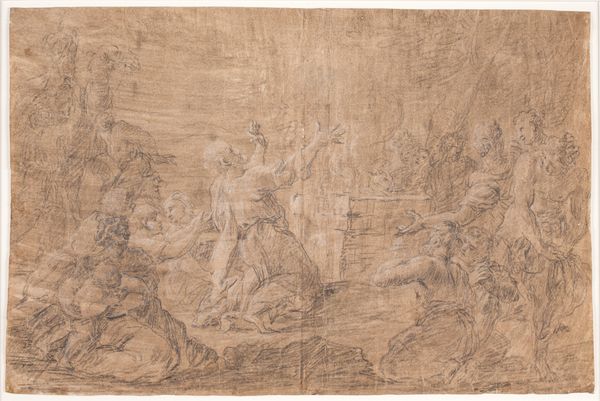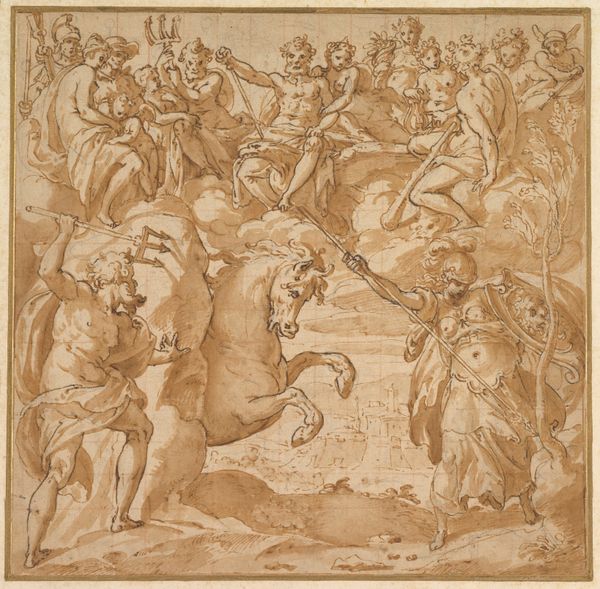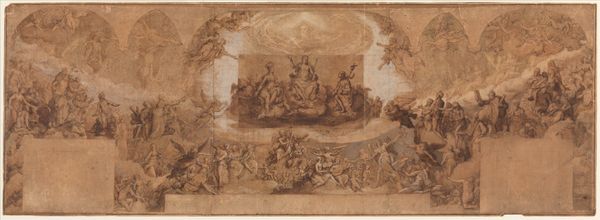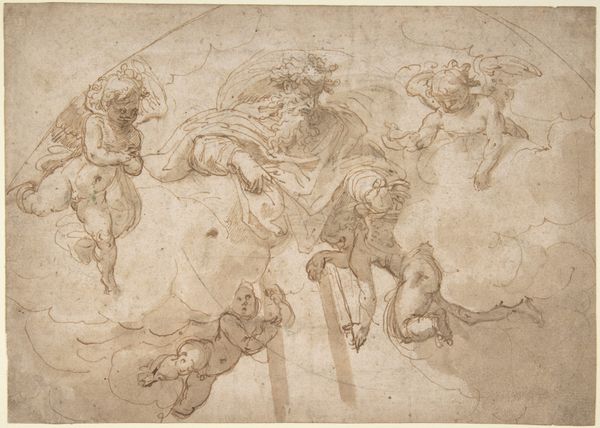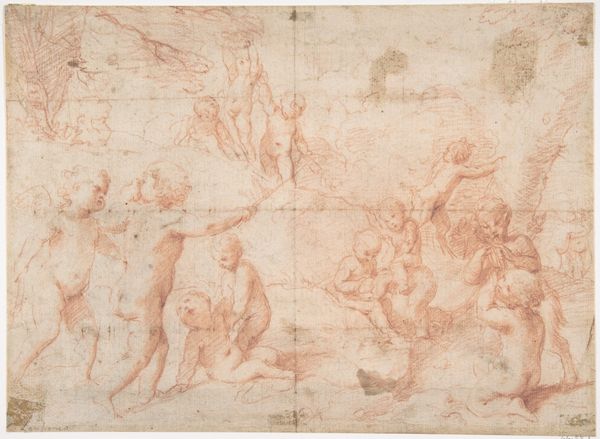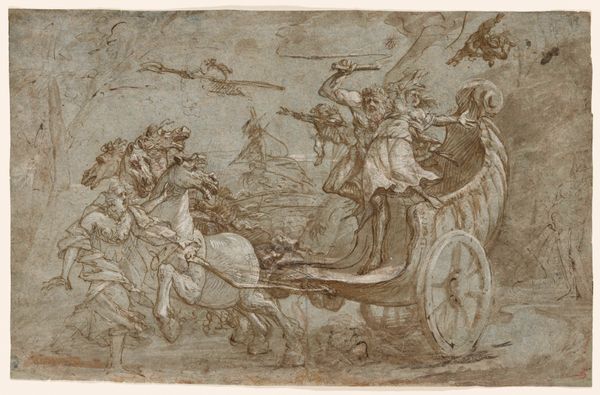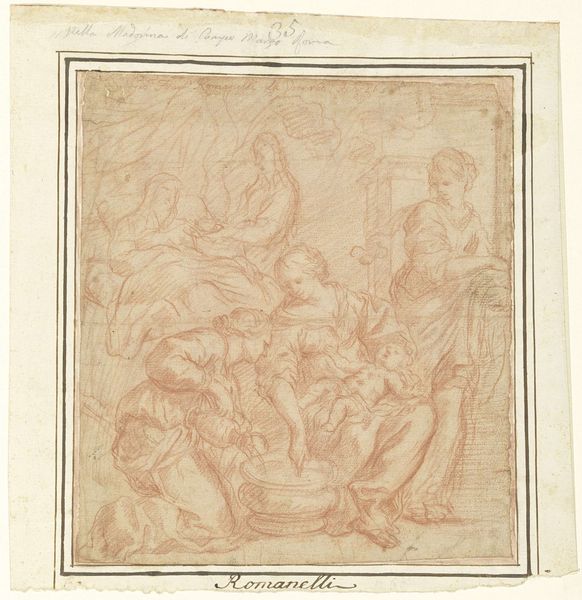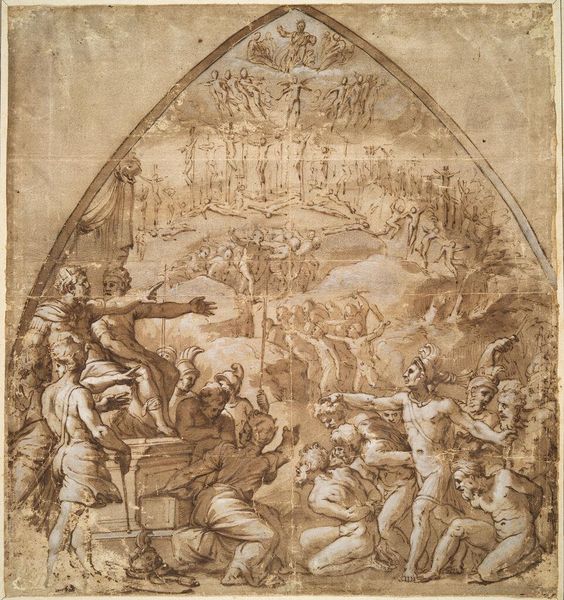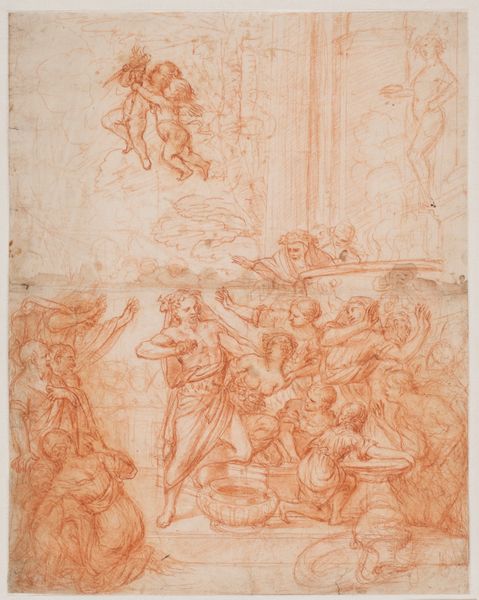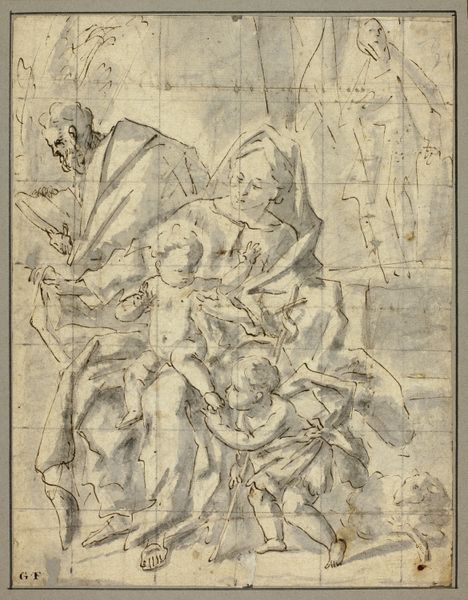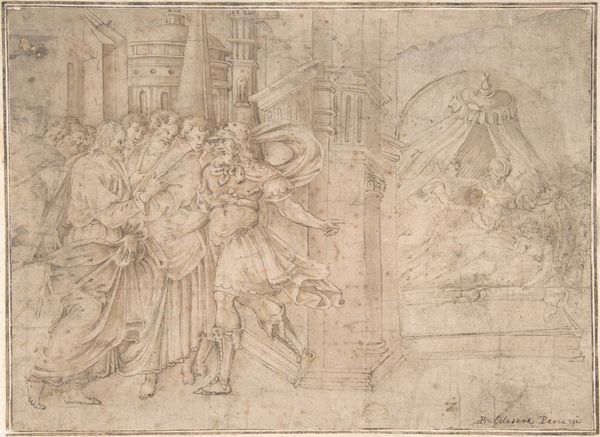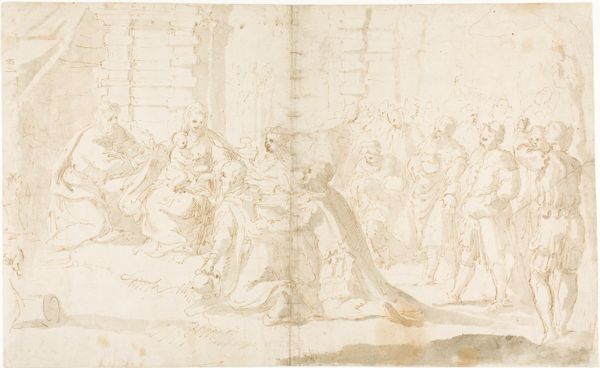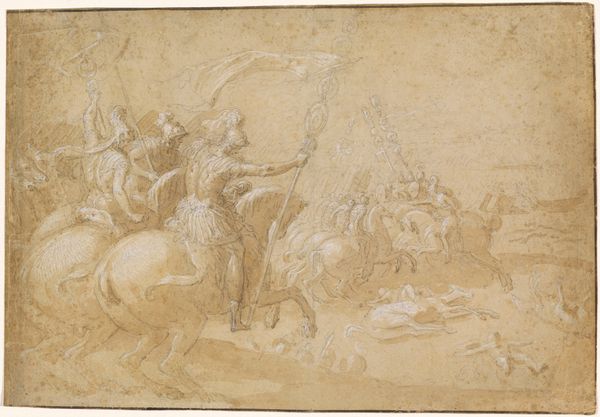
Dekorationsudkast med en gammel mand, symboliserende tiden, et skjold, en vase, en ørn og flere allegoriske figurer 1720 - 1751
0:00
0:00
drawing, etching
#
drawing
#
allegory
#
baroque
#
etching
#
etching
#
figuration
#
history-painting
Dimensions: 468 mm (height) x 471 mm (width) (bladmaal)
Editor: Here we have a drawing, or rather an etching, entitled "Dekorationsudkast med en gammel mand, symboliserende tiden, et skjold, en vase, en ørn og flere allegoriske figurer," which roughly translates to "Decorative draft with an old man symbolizing time, a shield, a vase, an eagle, and several allegorical figures," created sometime between 1720 and 1751 by an anonymous artist. The image is busy, filled with figures. What strikes you when you look at this piece? Curator: I see an intricate depiction, an allegorical sketch realized through the labor-intensive process of etching. What interests me is less the symbolism, and more how this design reflects the material culture of its time. Note the way the artist meticulously renders details – the textures, the weight, all created using acid and metal. Editor: So you’re focusing on the production itself? The how, not necessarily the what? Curator: Precisely. Think of the economic conditions that allowed for the creation of such a work. Etching was a commercial art form. How would it circulate? Who was its intended audience? Was it a pattern for larger productions, such as furniture, perhaps? Editor: I hadn’t considered it in relation to design and industry. That makes me see the whole thing differently; less a piece of fine art, and more of an instructional or inspirational template for… something else. Curator: Exactly. By questioning traditional boundaries between art and craft, we uncover a richer understanding of the materials, labor, and social context behind it. What does it mean to label it "art" at all? Editor: It seems like it blurs that line. Considering the time period and the methods, you start to see a connection to manufacturing that you wouldn’t pick up on otherwise. Curator: Yes, it asks us to rethink our assumptions. Editor: I learned that paying attention to process helps reveal the connection to society that produced it.
Comments
No comments
Be the first to comment and join the conversation on the ultimate creative platform.
